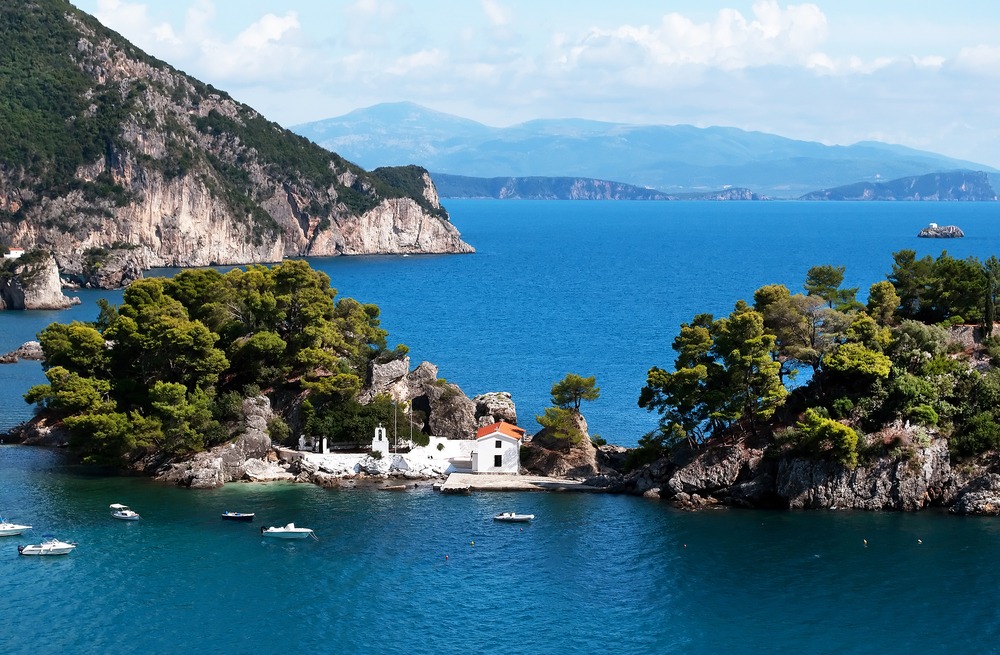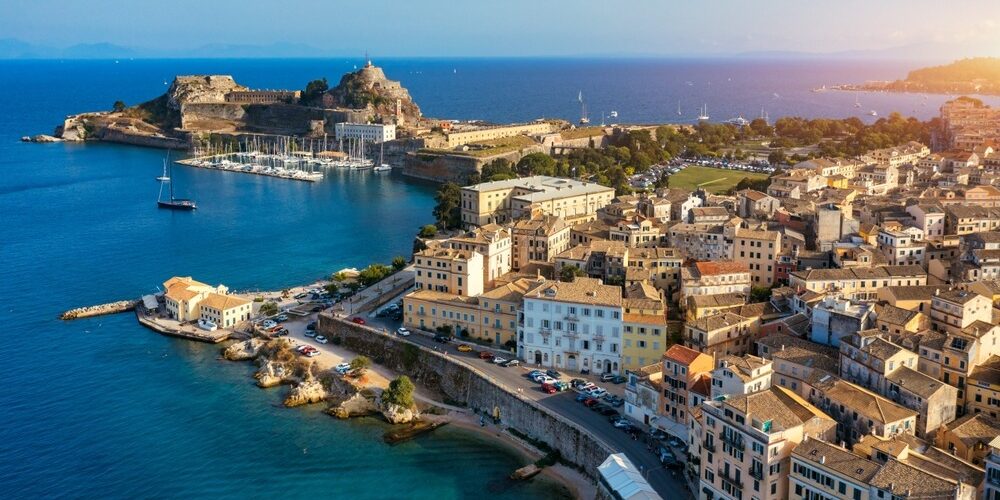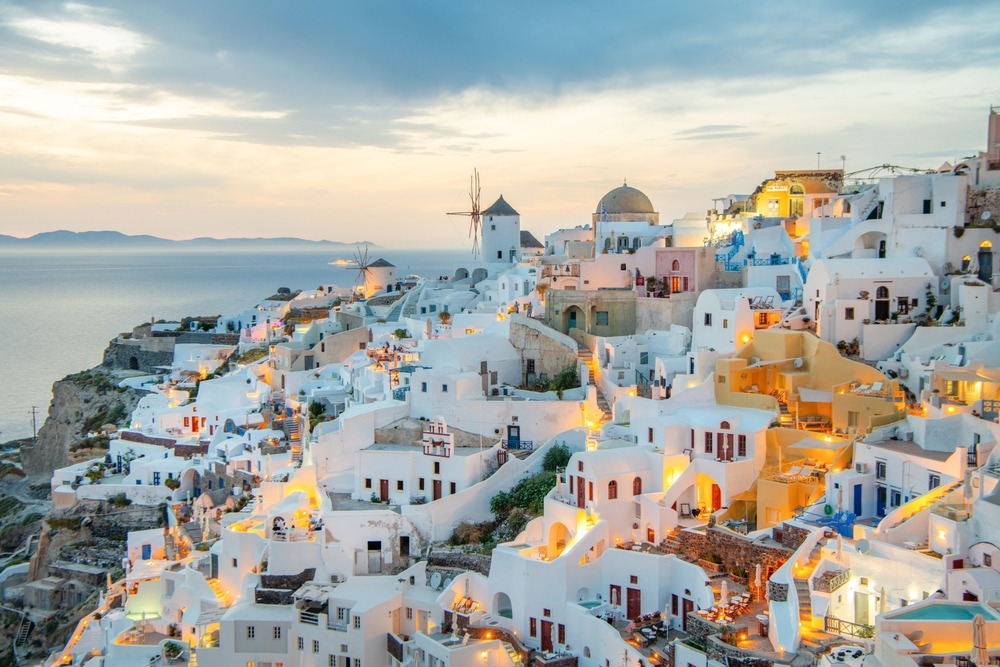Exploring the Greek Isles: A History and Guide to Greece’s Enchanting Archipelagos
The Greek Isles are legendary, captivating travelers for centuries with their beauty, history, and mythology. Home to idyllic beaches, azure waters, and ancient ruins, the Greek Isles are a timeless destination that offers a slice of paradise with an incredible historical depth. From the iconic whitewashed buildings of Santorini to the lush landscapes of Corfu, each island has its own unique story to tell. With over 6,000 islands and islets scattered across the Aegean and Ionian Seas, only 227 of which are inhabited, the Greek Isles offer an unparalleled range of natural and cultural diversity.

The Major Greek Island Groups
The Greek Isles are divided into several major archipelagos, each with distinct features and histories. The most famous of these groups are the Cyclades, Dodecanese, Ionian, Saronic, Sporades, and North Aegean islands, as well as Crete, Greece’s largest island.
- Cyclades: The Cyclades are among the most well-known islands, boasting famous spots like Mykonos, Santorini, and Paros. Known for their whitewashed houses, blue-domed churches, and vibrant nightlife, the Cyclades have long been a draw for tourists and artists alike.
- Dodecanese: Located in the southeastern Aegean Sea, close to the Turkish coast, the Dodecanese islands include Rhodes, Kos, and Patmos. Known for their medieval castles, Byzantine churches, and Ottoman influences, these islands showcase Greece’s diverse cultural influences.
- Ionian Islands: Located to the west of mainland Greece, the Ionian Islands, including Corfu, Zakynthos, and Kefalonia, are characterized by lush greenery and Venetian architecture, a legacy of the centuries they spent under Venetian rule.
- Saronic Islands: Situated near Athens, the Saronic Islands like Aegina, Hydra, and Poros are popular weekend getaways for Athenians. These islands played a significant role in Greek history, particularly during the Greek War of Independence.
- Sporades: Located along the eastern coast of Greece, the Sporades are known for their crystal-clear waters and green landscapes. The island of Skopelos gained fame as the filming location for the movie Mamma Mia!
- North Aegean Islands: The North Aegean group, which includes Lesbos, Chios, and Samos, lies closer to Turkey than to mainland Greece. These islands have rich histories, with sites dating back to antiquity.
- Crete: Crete, the largest Greek island, is considered a separate entity because of its size, culture, and significance in Greek history. Crete is home to the ancient Minoan civilization, one of the earliest advanced societies in Europe, and the legendary Palace of Knossos.
A Brief History of the Greek Isles
The history of the Greek Isles is as diverse and fascinating as the islands themselves, dating back thousands of years and spanning multiple civilizations.
Prehistoric and Ancient Times
The Greek Isles were settled as early as the Neolithic period (7000 BCE), and by the Bronze Age, the Cycladic, Minoan, and Mycenaean cultures had flourished. Crete was the center of the Minoan civilization, which reached its height around 1600 BCE. The Minoans developed advanced architectural, artistic, and maritime skills, leaving behind ruins like the Palace of Knossos and intricate frescoes.
Meanwhile, the Cycladic civilization developed in the Cyclades, known for its distinct marble figurines and minimalist art. In the Mycenaean period, Greek mythology and early literature began to take shape, including the legendary tales of gods, heroes, and epic journeys.
Classical Greece and the Birth of Democracy
In the classical period, Athens, Sparta, and other city-states rose to power, influencing much of the Aegean Sea. Many islands became central to the Persian and Peloponnesian wars, serving as strategic locations and supply routes. Delos, one of the Cyclades, held particular importance as a religious center dedicated to Apollo and Artemis and later became a thriving commercial hub.
This period also saw the flowering of Greek art, philosophy, and democracy, which spread through the Aegean and shaped Western civilization. After Alexander the Great’s conquests, Hellenistic influence spread across the Mediterranean, leaving traces in island architecture, sculpture, and urban planning.
Roman, Byzantine, and Ottoman Rule
By 146 BCE, Rome had conquered Greece, integrating the islands into the Roman Empire. When the empire split, the Greek Isles became part of the Eastern Byzantine Empire, which preserved and spread Greek Orthodox Christianity. This period saw the construction of beautiful monasteries and churches that still stand today, particularly in the Dodecanese.
After the fall of Constantinople in 1453, the Ottoman Empire took control of many Greek islands. The Venetians retained control over some, particularly in the Ionian Sea, which explains the Venetian architecture in islands like Corfu and Zakynthos. Ottoman rule introduced new cultural elements and left a lasting impact on the cuisine, architecture, and even the island dialects.
Greek Independence and Modern History
The Greek War of Independence (1821-1830) was marked by numerous battles on the islands, especially in the Saronic and Dodecanese regions. Hydra, Spetses, and Psara played crucial roles as centers of naval power. After Greece gained independence, many islands were gradually incorporated into the new nation-state, but some, like the Dodecanese, remained under foreign control until after World War II.
During the 20th century, the islands experienced economic and cultural growth, with tourism gradually becoming a major industry. Today, the Greek Isles are a blend of ancient history, traditional culture, and modern appeal, attracting millions of visitors annually.

Unique Features and Cultural Highlights of the Greek Isles
Each Greek island has its own character, shaped by geography, history, and local traditions. Here are some highlights:
- Santorini: Known for its volcanic origins, Santorini’s dramatic cliffs and caldera views make it one of the most photographed islands in the world. Its sunsets, whitewashed buildings, and ancient Akrotiri ruins draw travelers year-round.
- Mykonos: Famous for its lively nightlife and cosmopolitan atmosphere, Mykonos is an island where tradition and modernity meet. It’s known for beautiful beaches, windmills, and vibrant festivals.
- Rhodes: With a medieval Old Town designated as a UNESCO World Heritage site, Rhodes is a treasure trove of ancient and medieval history. The island boasts ancient Greek temples, Byzantine churches, and the Palace of the Grand Master from the time of the Knights of St. John.
- Corfu: Lush, green Corfu is distinct from other islands with its Venetian, French, and British influences. Its Old Town is also a UNESCO site, with historical sites like Achilleion Palace and Mon Repos.
- Crete: As the cradle of Minoan civilization, Crete offers diverse landscapes, ancient ruins, and rich cultural traditions. Visitors can explore Knossos, the Samaria Gorge, and vibrant cities like Heraklion and Chania.
- Patmos: Known as the “Island of the Apocalypse,” Patmos is where the Apostle John is said to have written the Book of Revelation. The Monastery of Saint John and the Cave of the Apocalypse are key pilgrimage sites.
Visiting the Greek Isles Today
Traveling to the Greek Isles offers a journey through millennia of history, along with stunning natural beauty and warm Mediterranean hospitality. Each island has its own story, with influences from various civilizations. Whether it’s the beaches of the Cyclades, the Byzantine history of the Dodecanese, or the Venetian charm of the Ionian Islands, there is something for every traveler.
Today, the Greek government and local authorities work to preserve the natural landscapes and historical sites that make these islands so special. Sustainable tourism initiatives and conservation efforts aim to protect the islands’ ecosystems and cultural heritage, ensuring that future generations can enjoy the wonders of the Greek Isles.
The Greek Isles, with their breathtaking landscapes, ancient ruins, and rich cultural traditions, are much more than a travel destination; they are a window into the past and a celebration of Mediterranean life. Each island has its own soul, shaped by thousands of years of history and mythology, waiting to be explored. Whether you are drawn to their beaches, their legends, or their quaint villages, the Greek Isles continue to be an enduring source of inspiration and beauty for visitors from around the globe.



































